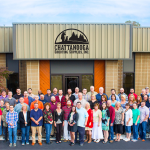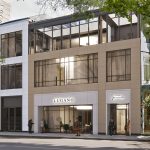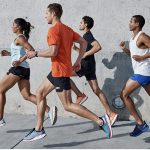Metro urban bicyclists are more diverse, affluent and better educated than the average adult U.S. cyclist and significantly more inclined to buy their bikes from independent bike dealers than mass merchants, according to third annual American Bicyclist Study released at the 2014 National Bike Summit in Washington DC.
A brief summary of the 84-page report shows that almost half of 152 city dwellers who responded to a survey made their most recent bicycle purchase at a bike shop (49 percent) while one-third (32 percent) made their purchase at a discount/mass merchant retailer. More than eight in 10 (81 percent) had spent an average of $554.37 to buy a new bike and 27 percent had spent an average of $551.72 to buy a used bike. Urban cyclists also indicated they planned to spend 38 to 60 percent more on cycling products compared with the typical adult cyclist.
Excerpts from the 84-page report were presented at the National Bike Summit, which is held by The League of American Bicyclists in Washington DC every spring. The summit draws hundreds of bicycling advocates for three days of lobbying on behalf of increased federal spending on bicycling infrastructure.
Metro urban cyclists are younger and twice as likely be African-American, (18 percent) or Asian (11 percent) and much more likely to be Hispanic (13 percent) than the overall U.S. cycling population (9, 5 and 9 percent respectively). Thirty-three percent use their bikes primarily for commuting, compared to 25 percent for the overal population. As a result they are signficantly more concerned about access to safe roads and safe places to store their bikes than the overal cycling population.
“The riding habits of this group are significantly different in terms of riding frequency and are driven by reasons other than the typical fun and fitness the two primary reasons for riding a bicycle among adults,” reads the report. “While they accumulate fewer miles, due to living in a denser environment where essentials such as shopping and dining out are closer, they ride much more frequently than the average adult bicyclist.”
The research provides key data that will help the U.S. bicycle industry advocates, retailers, and suppliers present a united front for the growth of urban bicycle transportation, according to Jay Townley, a partner with The Gluskin Townley Group, the market research and consulting firm that produces the report. For instance, the survey found the three key factors that would spur this group to ride more often, compared to the average adult cyclist, are safer roads, safer places to ride, and safe places to keep their bicycle.
The American Bicyclist Study was conducted during the first quarter of 2014 using an electronic survey delivered to a nationally representative panel managed by one of the leading panel research companies in the U.S. The sample was balanced to geographic and demographic norms based on the 2010 U.S. Census data. A total of 1,500 completed qualified responses were received. All industry accepted research practices and standards were followed during the questionnaire design, fieldwork, and analysis of the results.















